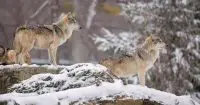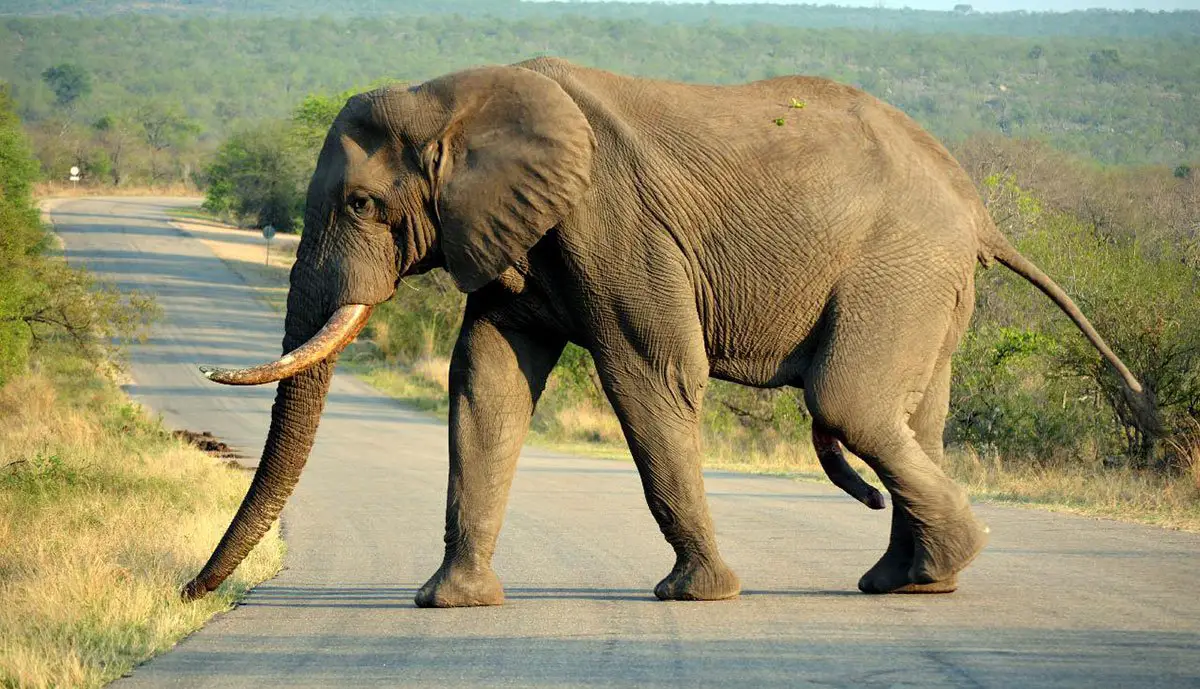This article illustrates some of the most interesting facts about gray wolves. The gray wolf (Canis lupus) is a land predator that lives in the grasslands and arctic tundra of North America and Eurasia. It is the largest member of the Canidae family. Gray wolf is also called timber wolf.
Gray Wolf Facts for Kids
Adult wolves reach a length of 105–160 cm and they stand 80 – 85 cm at the shoulder height. Gray wolves have 29 – 50 cm long tail.
Gray wolves weigh as much as 88 pounds but the heaviest wolf ever recorded at 170 pounds. The largest gray wolf was shot in Alaska in 1939. It weighed 175 pounds.
Where Do Gray Wolves Live? The gray wolf makes home in a wide variety of habitats such as deserts, arctic tundras, grasslands, and forests.
What Do Gray Wolves Eat? Gray wolves  eat medium-sized to large animals such as muskoxen, bison, moose, roe deer, mouse, waterfowls, rodents, voles, ground squirrels, marmots, hares, snakes, toads, weasels, foxes, badgers, hamsters, lizards, Caspian seal, salmon, grey langur, baboons, caribou, American bison, and sheep.
eat medium-sized to large animals such as muskoxen, bison, moose, roe deer, mouse, waterfowls, rodents, voles, ground squirrels, marmots, hares, snakes, toads, weasels, foxes, badgers, hamsters, lizards, Caspian seal, salmon, grey langur, baboons, caribou, American bison, and sheep.
In North America they live in Glacier National Park, British Colombia, Yellowstone National Park, northern Washington, Idaho, Montana, and Alberta.
Golden jackals and coyotes are thought to be the closest relatives of gray wolf.
Gray wolf can break the hardest of the bones with their jaw force of perhaps 1,500 psi.
They have dense fur and long guard hairs which allow them to survive the extreme temperature of −40°.
How Fast Can a Gray Wolf Run? Gray wolves can reach a speed of 50 – 60 km/h.
Like most other wolves, gray wolf is also social animal. It lives in groups called packs. Each pack consists of 5 – 11 individuals. There can be as many as 42 wolves in a single pack.
Gray wolves establish territories and they actively defend them.
While they do have a great stamina wolves usually give up chase after 1 – 2 kilometers.
The female produces 5 – 6 pups after a gestation period of 62 – 75 days. The pup weighs 300 – 500 grams at birth.
Gray wolf can live as long as 6 to 8 years in the wild.
Gray wolves do not seem to have any natural predator in the wild except for perhaps brown bears, American black bears, or polar bears.





